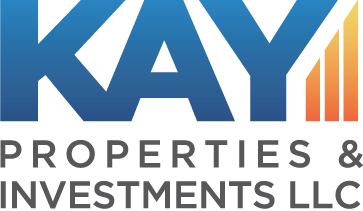By: Kay Properties and Investments, LLC
Investors often approach Kay Properties and Investments to expand their investment research into Delaware Statutory Trusts (DSTs) after speaking with a friend, registered rep, or advisor about the opportunity. Unfortunately, we continue to discover that whoever is advising the client has been providing incorrect or incomplete information. DSTs are sophisticated investment vehicles that require a niche expertise. We have developed a series of questions for investors to ask their DST provider to help prevent making ill-advised investment decisions potentially detrimental to their family’s financial security.
How many investments has the advisor made into DSTs?
Not all experience is created equal when a DST provider says they have years of experience, they often mean that they have completed a small number of DST investments over many years if investment related experience. We do not consider this to be acceptable when investing in DSTs. A Kay Properties licensed team member is often involved in more DST exchanges in a single year than many DST providers do in their entire career. It is critical for a DST provider to see various types of deals and DSTs in order to gain an understanding of the potential risks to avoid and help the client capture potential opportunities. Oftentimes, the DST provider just lacks the experience necessary to advise the client on DSTs.
How many Sponsors do you carry on your platform?
Many DST providers do not have the time and resources to research the DST sponsor companies in the industry. Therefore, they rely on the few large companies in the industry with resources to spend on marketing, fancy lunches, and a suave financial advisor wholesaler network (the DST sponsor company sales people that meet with financial advisors and pitch them their companies DST products and in turn the financial advisor then pitches the DSTs to his or her clients). As a result, the client may miss out on other DST investments potentially more suitable for the client. We often find that clients over concentrate by placing large exchanges in just 1-3 DSTs, when the client would be more suited diversifying* into 5-10 DSTs. The lack of DST 1031 options on the DST provider’s platform is often misrepresented by the DST provider. They claim, “these are the only properties that passed their due diligence” when in actuality their lack of options is the result of lack of business volume necessary to put the time, effort and resources into analyzing and visiting the many different DST properties for sale by the many DST sponsors in the space.
Why did you select to represent those Sponsors on your platform?
We often hear from clients that their DST provider told them to go with a specific sponsor due to their track record and time in the industry. However, the DST provider’s due diligence is often limited to the marketing material and sales pitches of those few DST sponsor companies. Often, the reason DST providers carry a certain sponsor on their platform has more to due with the sponsor’s marketing budget than it does with the quality of the DST. Kay Properties due diligence and analysis team conducts due diligence on every DST it carries on its platform. This includes asset class rejection of risky assets such as hotels and senior care facilities (Kay Properties will not offer these asset classes to our clients), mystery shopping each property, 3rd party reports and market analysis, sensitivity analysis and stress test on cash flow assumptions, and lease audits. Many financial advisors selling DSTs are only one or two man/woman shops that do not have the resources to internally do this level of analysis and underwriting which in turn may leave their investors to pay the price for lack of diligence.
Has the Sponsor ever missed projections or sold a property for less than what they purchased the property?
When inquiring about Sponsors track record, many advisors will only provide general and often ambiguous statistics that require unpacking to understand. The client should ask her advisor how many times the sponsor sold a property for less than they purchased the property. It is also important to find out how many of the Sponsor’s DSTs have missed their cash flow projections. For example, we often see a Sponsor display a positive Annual Rates of Return (ARR), which includes both cashflow as well as property appreciation averaged over the lifetime of the DST. However, they often refrain from informing their clients that that the asset was actually sold at a lower price than it was originally purchased.
Should I diversify more?
It would be suspicious if an advisor encouraged her client to invest all his money into one stock no matter how exciting the projections. This same wisdom applies to DSTs. Kay Properties and Investments encourages our clients to diversify by asset type, asset class, geography, and sponsor. Additionally, investing in one DST with multiple properties does not equate to a well-diversified portfolio as we have seen portfolio DSTs whereby one bad property dragged down the returns of the entire portfolio. We have also seen some very credible sponsors choose bad properties that end up performing poorly for investors. Therefore, it is always prudent to diversify across multiple sponsors and offerings. Real estate is risky, an investor can lose their entire investment. Diversification is critical to mitigating risk, especially in DSTs. Diversification does not guarantee profits or protect against losses.
My mortgage is paid off… Should I really be leveraging into DSTs with debt at my age? What happens if I want to be debt free later?
Most DST properties in the market are leveraged at approximately 50-60% Loan to Value. This is fine for investors needing to replace debt due to the 1031 exchange guidelines, however for those investors that are selling their properties debt free we would advise a cautious approach. If the debt free investor exchanges into leveraged DSTs, then they now have the risk of foreclosure and a much higher risk of complete loss of their invested principal. Additionally, when the DST property sells in the future, they will then have to purchase equal or greater value if they choose to do another 1031 exchange. They now no longer have the luxury of staying debt free. Many investors want to reduce their risk potential, unfortunately we see many financial advisors forcing their clients into DSTs with high leverage. This is often because the financial advisor does not have any debt free DST products available. If you already paid off your property you would be well advised to stay debt free and only purchase all-cash debt free DSTs.
*Diversification does not guarantee profits or protect against losses.
